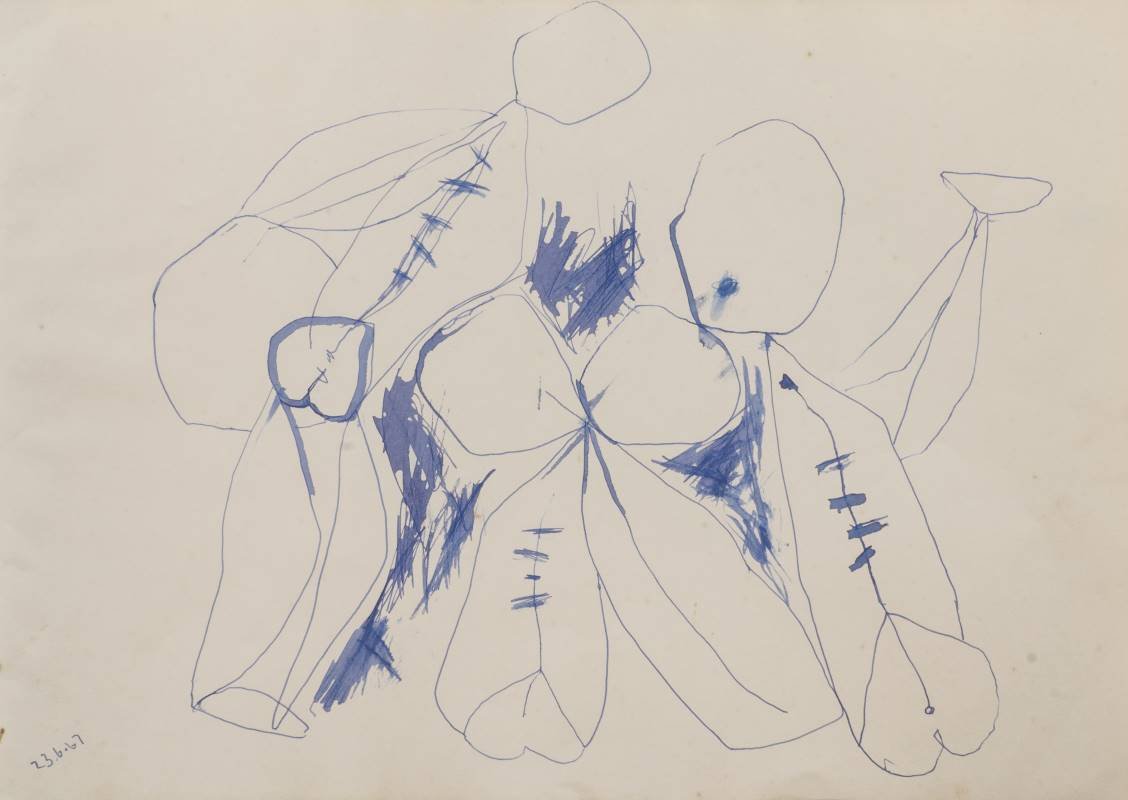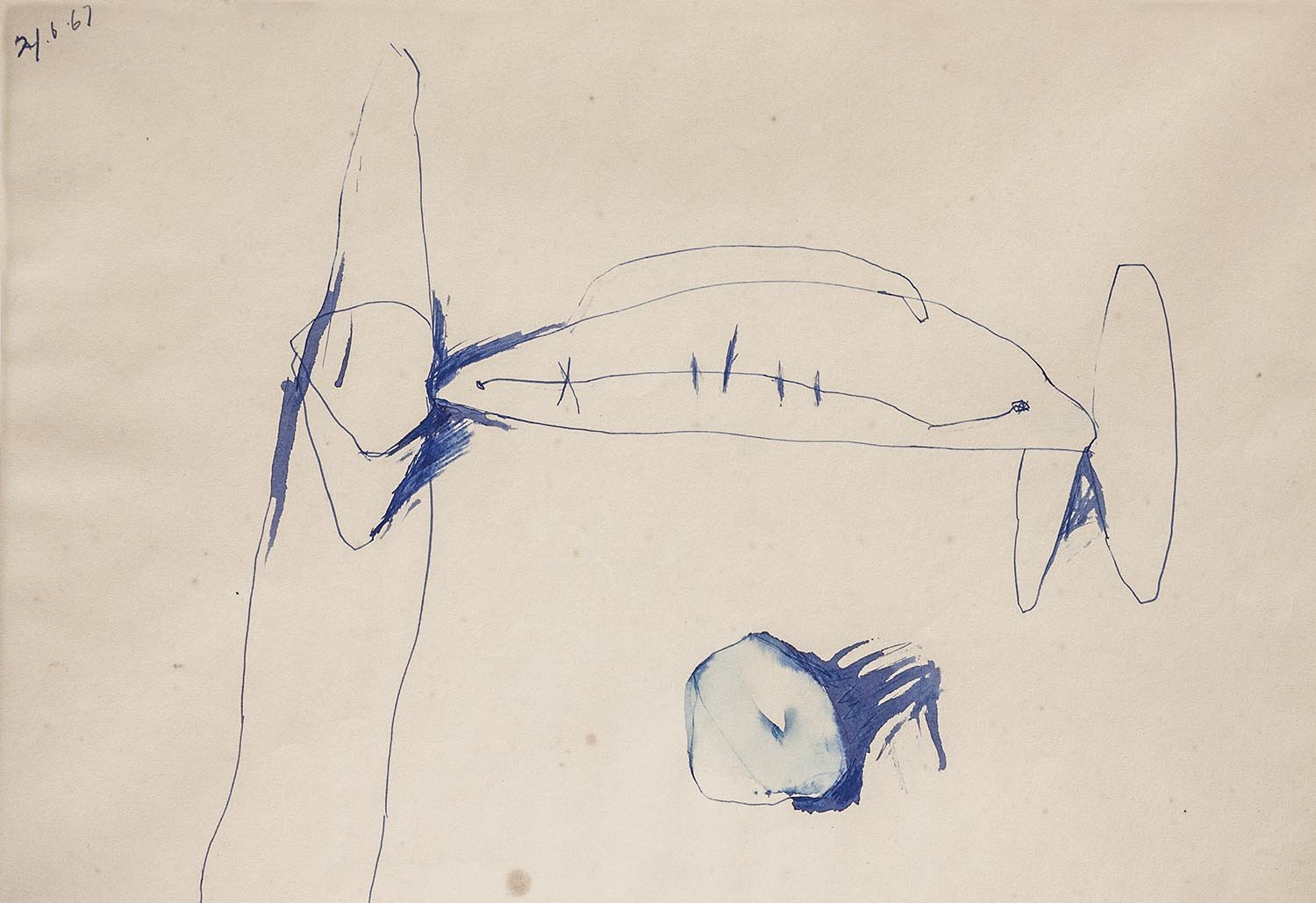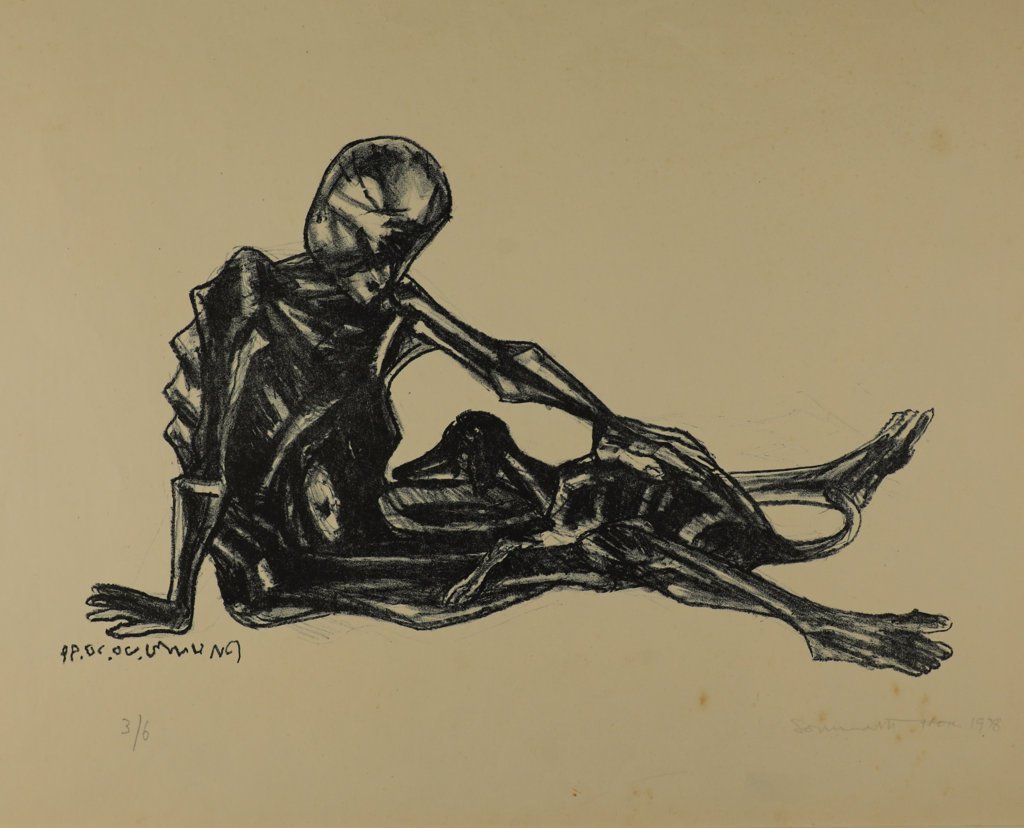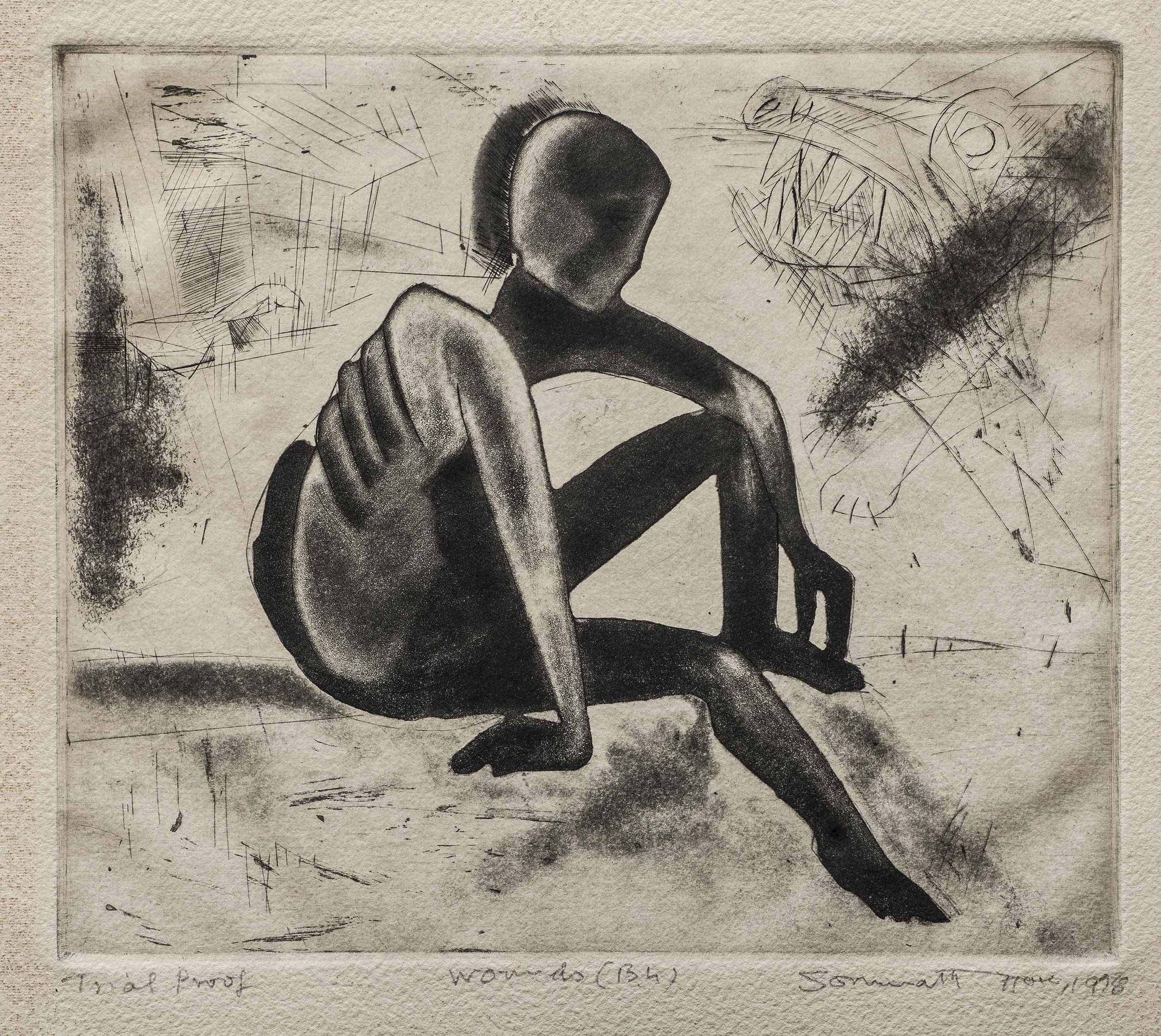
Transcending Pain- Somnath Hore
October 9 - November 9, 2023 at Akar Prakar, Delhi
Somnath Hore, in the course of his life, was witness to a long period of darkness, beginning in 1934 and stretching to 1949.
The hurts inflicted upon him by those dark experiences reverberated deeply through his creativity. Quite early in his life, he experienced occasions of harsh reality which developed a robust self-confidence in the artist. He came in close contact with the Communist Party in 1941 before he became acquainted with the art world. Through many adverse circumstances, devastating, traumatic events and setbacks, he arrived at a self-realization that was to be the unshakable foundation of his artistic consciousness for the future.
The first-hand experience of the 1943 Bengal famine, the poverty of his family after his father's death, Chittoprasad's company, and the direct contact with destitute people suffering from hunger and want enabled his inner self to achieve an immutable realisation of the nature of deep human anguish. Not only the famine of 1943. During 1946-49, his participation in the Sharecroppers Movement, Vietnam Day, the riots, India's Independence, living underground when the Communist Party was banned-all these experiences have come back again and again in his creations with the fervour, the appeal of naked truth and the helplessness of human suffering.
Those pitiless days were reminders of a horror which built up a sense of self-reproach in the artist. He did not experience them directly, their heat did not singe him. But he could understand how those unbearable events affected his artistic conscience and made him devote all his life to the goal of painting honestly. This conscience never allowed him to commercialise his art, to think in terms of paltry success or to produce art to please people.
In a life dedicated to art, the Wounds series marks a high point of achievement in the trajectory of Somnath Hore's development as an artist. The wound image signifies a very personal artistic style sprung from the artist's rare life experiences. It fills the viewer with melancholy but also ignites the fire of protest. The works' language of art does not need a separate introduction or narrative, as they convey a deep human sensibility irrespective of time, place or person.
There are wounds of experience everywhere in his turbulent life marked by struggles and clashes. As an artist, he was not as motivated by any superimposed purpose or ideal as by his hard-won experiences and beliefs that acted as the source and raw material for his many creative works during his long journey as an artist.
The joy of creativity had washed away all his disappointments and weariness.
Excerpts from Somnath Hore: Art of Wounds
By Atanu Bhattacharya
Translated by Ankona Das
Somnath Hore | Untitled | Pen & ink on paper | 10.25 x 14.5 in | 1967
Somnath Hore | Untitled | Pen & ink on paper | 10.25 x 14.5 in | 1967
Somnath Hore | Untitled | Pen & ink on paper | 10.25 x 14.5 in | 1967
Somnath Hore | Untitled | Ink & brush | 9.75 x 14 in | 1967
Somnath Hore | Untitled | Ink & brush | 9.75 x 13.75 in | 1967
Somnath Hore | Untitled | Linocut | 7.25 x 5.25 in | 1967
Somnath Hore | Untitled | Ink & brush | 8.25 x 4.75 in
Somnath Hore | Untitled | Ink & brush on paper | 8.5 x 5.25 in | 1975
Somnath Hore | Untitled | Ink & brush on paper | 8.5 x 5.25 in | 1975
Somnath Hore | Untitled | Ink & brush on paper | 6.75 x 4.75 in | 1975
Somnath Hore | Untitled | Ink & brush on paper | 5 x 8.25 in |1975
Somnath Hore | Untitled | Ink & brush on paper | 4.75 x 7.75 in | 1977
Somnath Hore | Untitled | Ink & brush on paper | 4.75 x 7.25 in | 1970
Somnath Hore | Untitled | Ink & brush on paper | 4.75 x 6.75 in
Somnath Hore | Untitled | Etching | 5.25 x 6.75 in | 1980
Somnath Hore | Untitled | Etching | 8.25 x 9.75 in | 1967
Somnath Hore | Untitled | Woodcut | 3.25 x 2.25 in
Somnath Hore | Untitled | Etching | 8.75 x 6.75 in | 1983
Somnath Hore | Untitled | Woodcut | 4.25 x 6.25.25 in | 1983
Somnath Hore | Untitled | Lithograph | 7.75 x 14.25 in | 1983
Somnath Hore | Untitled | Pulp print | 19.5 x 23.5 in | 1977
Somnath Hore | Wounds | Pulp print | 19.5 x 24 in | 1973
Somnath Hore | Wounds 54 | Pulp print | 15 x 16.75 in | 1983
Somnath Hore | Untitled | Lithograph | 10.75 x 16 in | 1983
Somnath Hore | Untitled | Pulp print | 6.25 x 8 in
Somnath Hore | Untitled | Woodcut | 6.75 x 8 in | 1973
Somnath Hore | Untitled | Ink & brush on paper | 9.25 x 9.25 in | 1985
Somnath Hore | Tebhaga Movement- Michil | Wood engraving | 4.8 x 7.7 in
Somnath Hore | Untitled | Etching | 11 x 13 in | 1967
Somnath Hore | Wounds (Trial Proof B4) | Etching | 8 x 9.25 in | 1978
Somnath Hore (1921 - 2006)
Somnath Hore was born in 1921, Chittagong (now in Bangladesh). He received a diploma in printmaking from the Government College of Art and Craft in Calcutta, while being closely associated with the Communist Party. He went on to carry out visual documentation and reportage of the Bengal famine in 1943 for the Communist Party magazine Jannayuddha (People's War). Socialist ideologies formed around the Tebhaga movement in 1946 in Bengal influenced the early phases of his artistic career. By the 1950s he was regarded as one of the premier printmakers in India and headed the Graphics and Printmaking Department at Kala Bhavana in Santiniketan, after returning from Delhi where he was in charge of the Printmaking Department of the Delhi Polytechnic in 1958.
He showcased his works in numerous national and international exhibitions including the Venice Biennale, Italy in 1962 and the Sao Paolo Biennale, Brazil in 1963 to name a few. The ‘wound series’ that he started making in the late 1960s as a response to the Naxalite movement and the social unrest around the world, was a unique technique of prints on paper pulp. By the mid-1970s, he turned to wax modelling, subsequently which was transferred to bronze. He was awarded the Lalit Kala Ratna Puraskar by Lalit Kala Akademi, New Delhi in 2004. The National Award (Painting) by Lalit Kala Akademi in 1960, the National Award (Graphics) by Lalit Kala Akademi in 1963. He was honoured Professor Emeritus at Kala Bhavana, Santiniketan in 1984. In the same year, he was awarded the Gagan-Aban award in Kolkata. Somnath Hore passed away in 2006 at the age of 85 in Santiniketan.

































